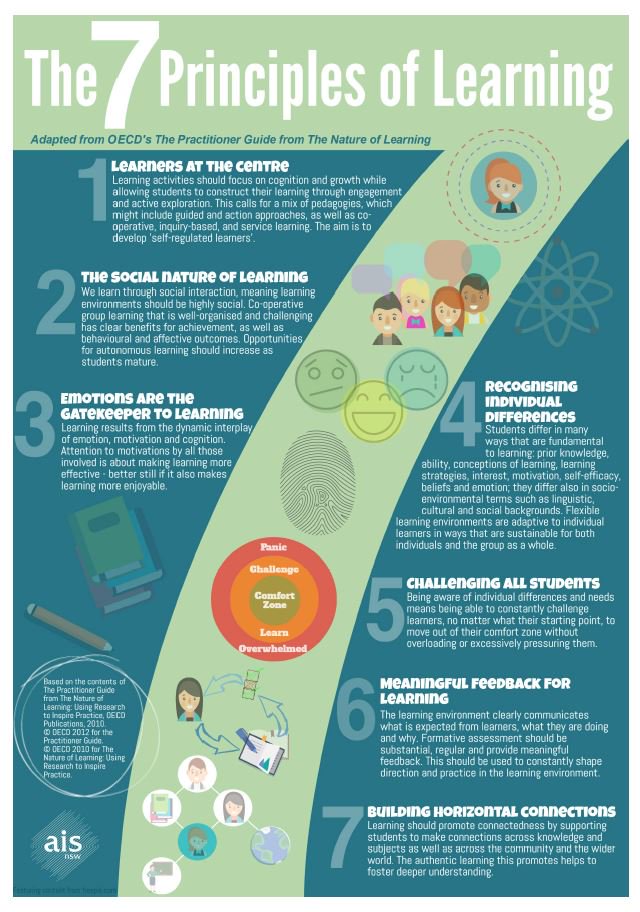Module 3 – Entry 2
Tyler Ohashi
The Organization for Cooperative and Economic Development (OECD) had developed “The 7 Principles of Learning” that highlight some features of powerful learning environments. Our school district has embraced these learning principles for a number of years now and these learning principles are being expected to be used.
Here is a link to an executive summary for the 7 Principles of Learning called, The Nature of Learning (2013) which is taken from the full publication “Innovative Learning Environments”.

(Image from OECD)
The executive summary, The Nature of Learning (2013), looks at a socio-constructivist viewpoint for how people learn. Implementing the 7 Principles of Learning into classrooms should yield better experiences for teachers and learners.
I am interested in looking at how these principles (which our school district expects) can be used to support Indigenous ways of teaching and learning. I am hoping to find commonalities that will allow me to develop lessons that will engage my Indigenous learners and my non-Indigenous learner at a high level.
Reference
Dumont, H., Instance, D., & Benevides, F. (2013). The Nature of Learning – Executive Summary. In Innovative learning environments. essay, OECD.
What a great guide for learning and I love how these principles can be applied from K-12.
I agree. These principles are expected in our school district. I have been using them in my classroom for a number of years now and I like how they make me think about how each learning experience I develop for my students will potentially perform.
Thanks for sharing this guide Tyler. It’s very interesting that my school district has the First Peoples’ Principles of Learning but they are different from yours. Your guide elaborates far more than mine so that users get a clear understanding of the spirit behind the principles.